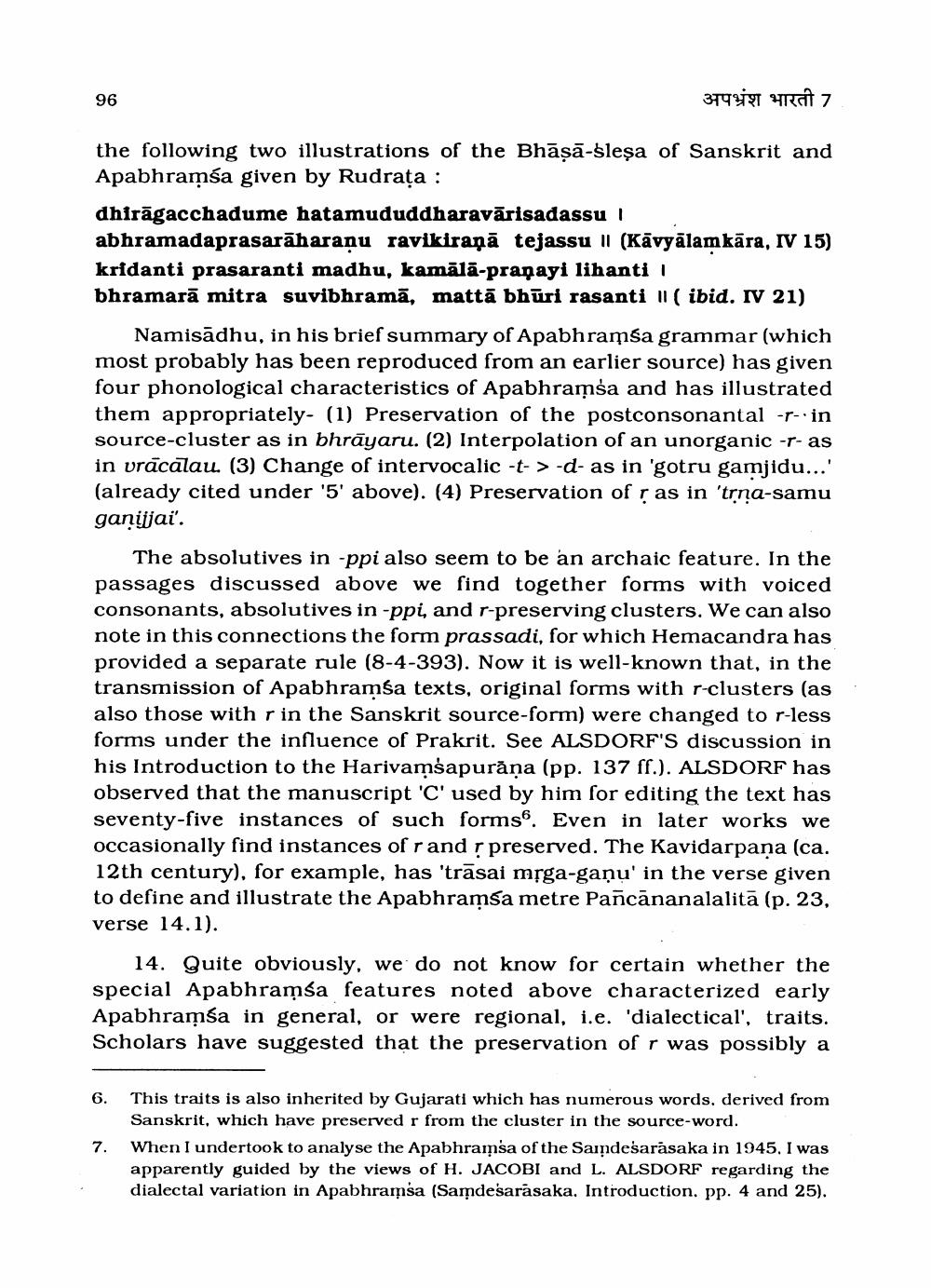________________
अपभ्रंश भारती 7
the following two illustrations of the Bhāṣā-sleṣa of Sanskrit and Apabhramsa given by Rudrața:
96
dhirāgacchadume hatamududdharavārisadassu abhramadaprasarāharanu ravikiraņā tejassu II (Kavyalamkāra, IV 15) kridanti prasaranti madhu, kamālā-pranayi lihanti |
bhramarā mitra suvibhramā, mattā bhūri rasanti (ibid. IV 21)
Namisādhu, in his brief summary of Apabhramsa grammar (which most probably has been reproduced from an earlier source) has given four phonological characteristics of Apabhramsa and has illustrated them appropriately- (1) Preservation of the postconsonantal rin source-cluster as in bhrayaru. (2) Interpolation of an unorganic -r- as in vracalau. (3) Change of intervocalic -t->-d- as in 'gotru gamjidu...' (already cited under '5' above). (4) Preservation of ras in 'trna-samu ganijjai'.
The absolutives in ppi also seem to be an archaic feature. In the passages discussed above we find together forms with voiced consonants, absolutives in -ppi, and r-preserving clusters. We can also note in this connections the form prassadi, for which Hemacandra has provided a separate rule (8-4-393). Now it is well-known that, in the transmission of Apabhramsa texts, original forms with r-clusters (as also those with r in the Sanskrit source-form) were changed to r-less forms under the influence of Prakrit. See ALSDORF'S discussion in his Introduction to the Harivamsapurāņa (pp. 137 ff.). ALSDORF has observed that the manuscript 'C' used by him for editing the text has seventy-five instances of such forms". Even in later works we occasionally find instances of r and r preserved. The Kavidarpana (ca. 12th century), for example, has 'trāsai mrga-ganu' in the verse given to define and illustrate the Apabhramsa metre Pañcananalalitā (p. 23, verse 14.1).
14. Quite obviously, we do not know for certain whether the special Apabhramsa features noted above characterized early Apabhramsa in general, or were regional, i.e. 'dialectical', traits. Scholars have suggested that the preservation of r was possibly a
6. This traits is also inherited by Gujarati which has numerous words, derived from Sanskrit, which have preserved r from the cluster in the source-word.
7.
When I undertook to analyse the Apabhramsa of the Sandesarasaka in 1945. I was apparently guided by the views of H. JACOBI and L. ALSDORF regarding the dialectal variation in Apabhramsa (Samdesarāsaka. Introduction. pp. 4 and 25).




